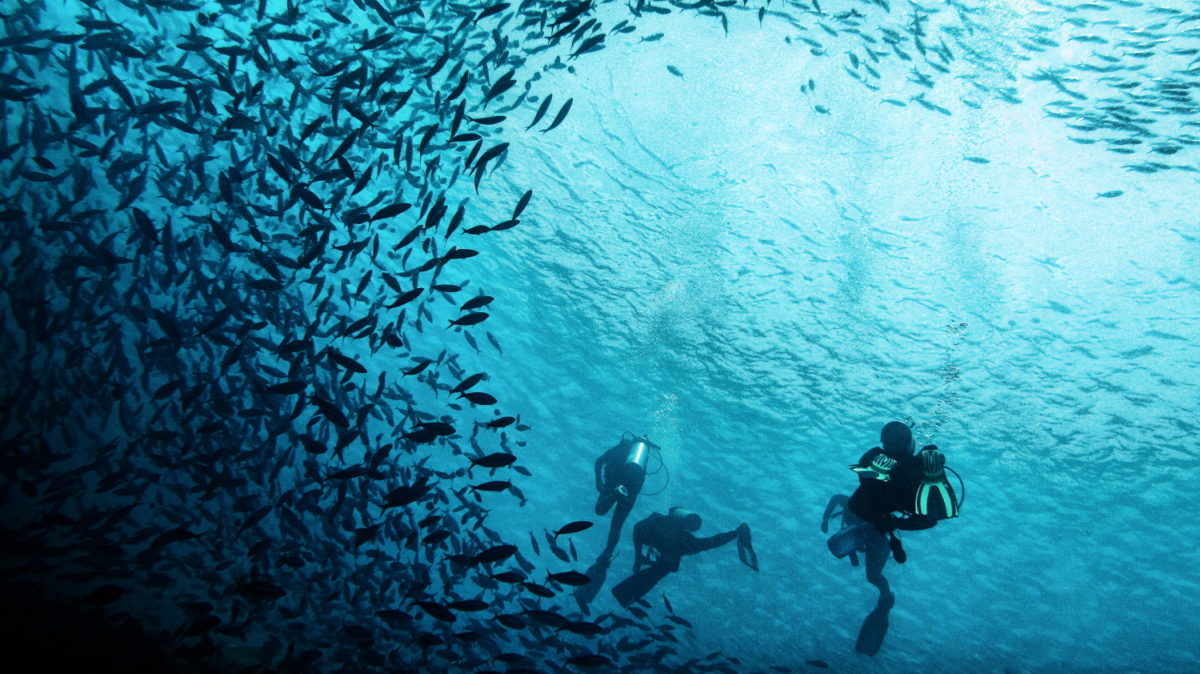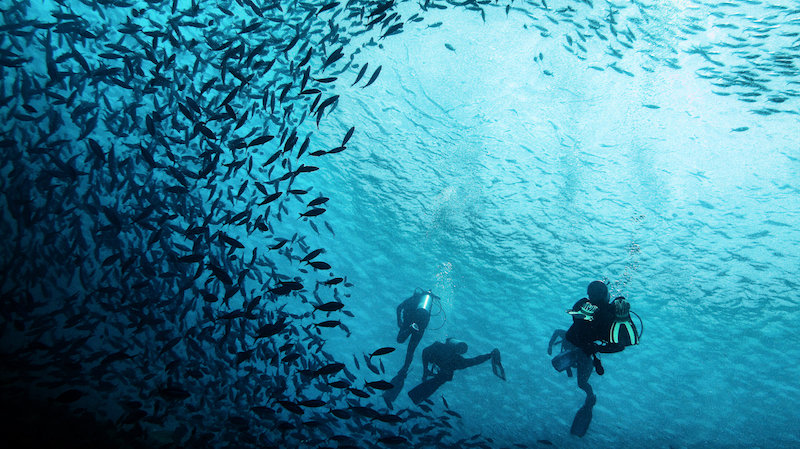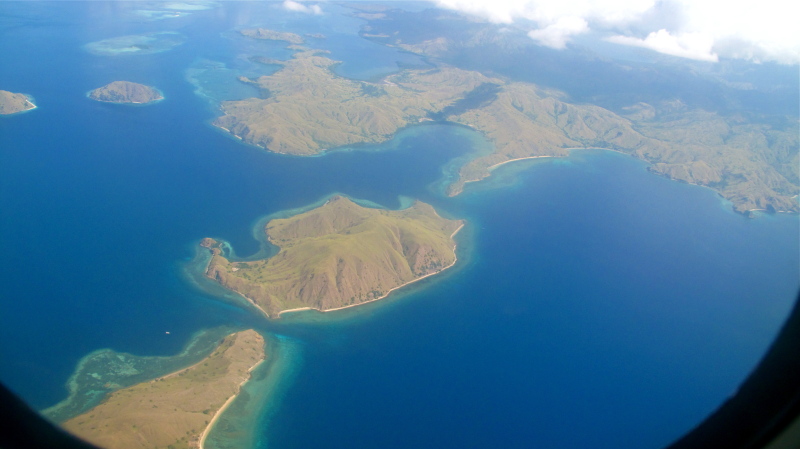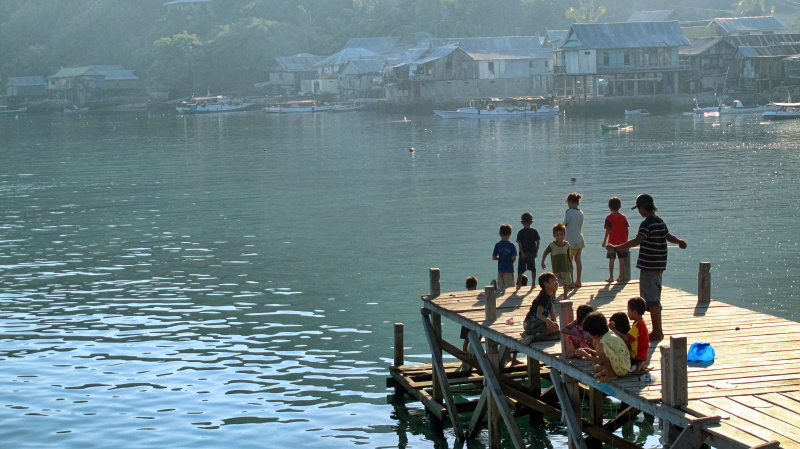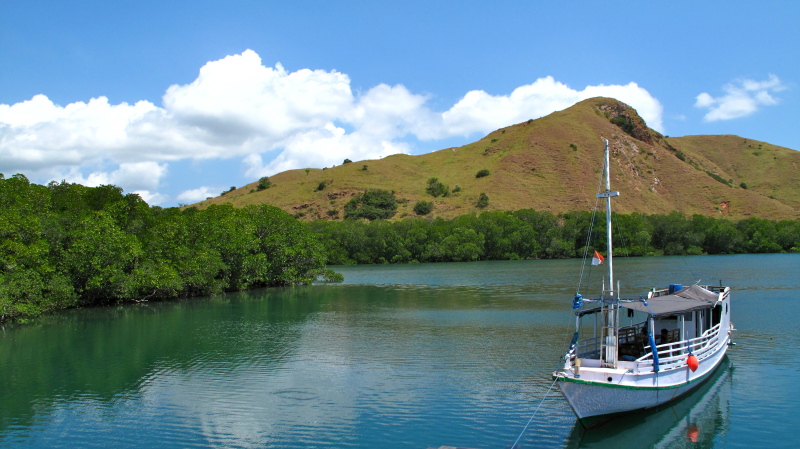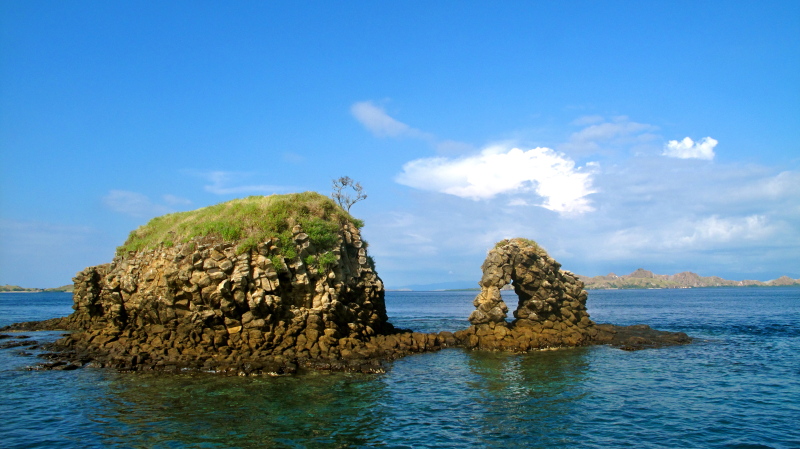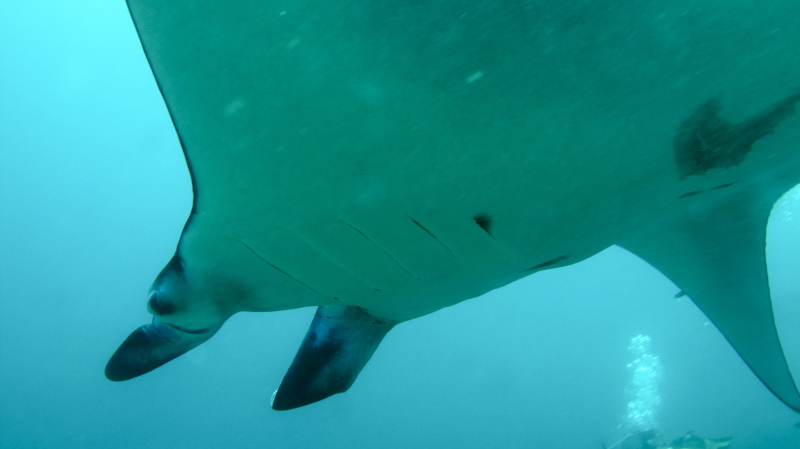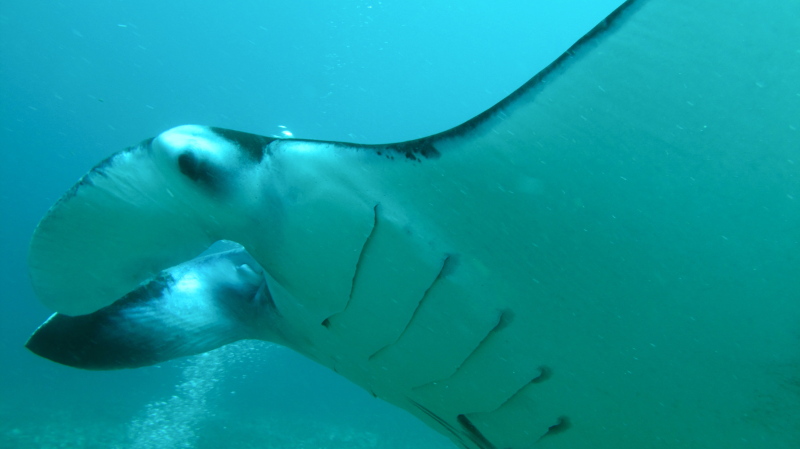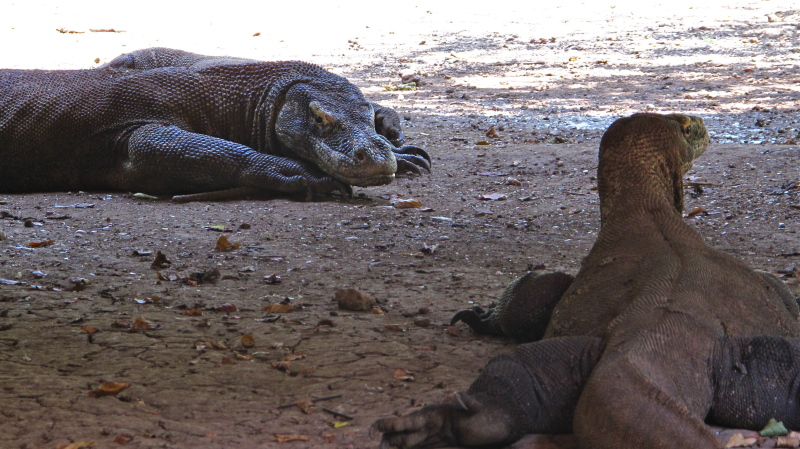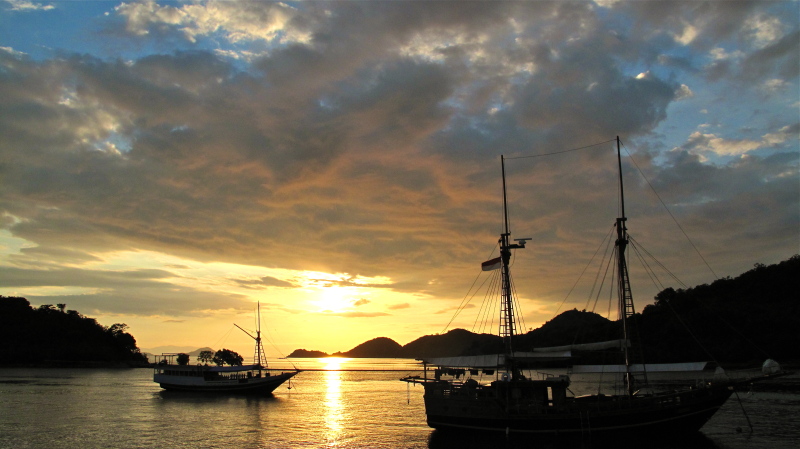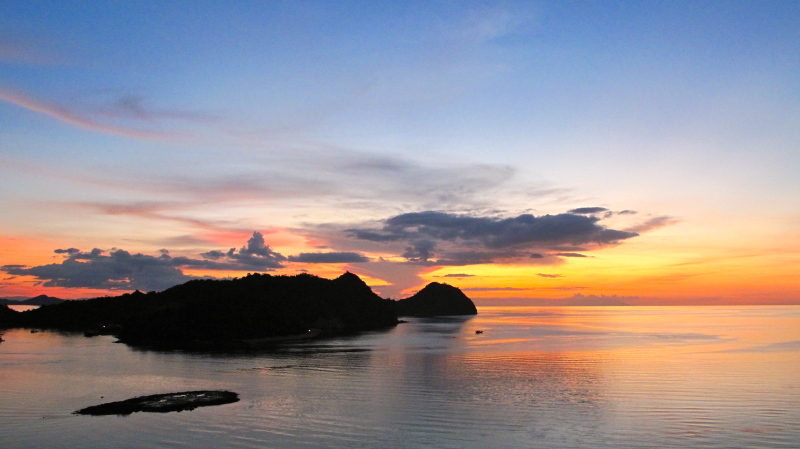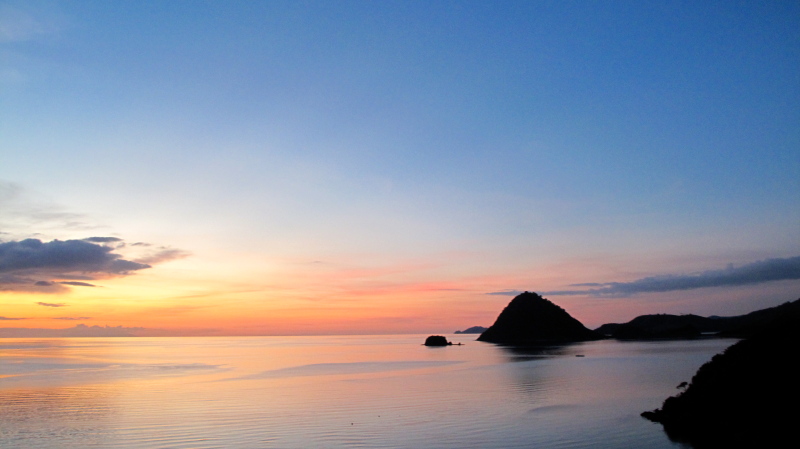Fleeing to Flores
I will always remember taking my first breath underwater. It is one of the most liberating and astounding sensations imaginable. Scuba diving marks the beginning of my lifelong love affair with the ocean. My mask opens a window to an exciting new world; my fins propel me into extraordinary journeys. Within two years, I’ve logged in more than a hundred dives in most of Indonesia’s top-notch dive sites, stretching from the pristine waters of Ujung Kulon National Park in West Java, the infamous Bunaken National Marine Park in North Sulawesi, to my ultimate favourite: the sublime islands of Raja Ampat, West Papua.
I live in Bali, but despite waking up to the ‘Morning of the World’ and diving the diverse waters of the ‘Islands of the Gods’, I find it hard to ignore my insatiable wanderlust and quest for adventures. The lure of the exotic islands of Flores (made famous with the 2004 discovery of Homo Floresiensis, or ‘Hobbits’), and Komodo is too strong to ignore. It doesn’t take much to persuade two like-minded divers looking to flee Bali to join me on a five-day escapade over the Easter weekend.
A pleasant 1.5-hour flight to Labuan Bajo – the port of entry to Flores – grants us unobstructed aerial views of Komodo and Rinca Islands’ barren, savannah-like, undulating surfaces. Apparently, that’s exactly the way West Flores’s legendary mascots – the Komodo dragons – like their environment. We arrive just in time to welcome the dry season between April and October. Visiting these monstrous pre-historic lizards in their natural habitat (they’re only found on Komodo, Rinca, Flores, and other smaller neighbouring islands) is high on our list. The real draw for us, however, is the adrenaline-infused diving in Komodo’s high-voltage current sites, arguably the richest marine ecosystems in the world.
Life is simple on this side of the world. As we wander around town we can’t help but feel as if time has taken us backward. This seemingly forgotten fishing village is lined with dilapidated shophouses, a couple of mosques, several unassuming Catholic churches (the main religion in Flores, first introduced by the Portuguese in the early 1500s), and brightly painted warungs advertising Padang food. Guesthouses, homestay cottages, travel agencies, and dive operators dot the main streets on both sides. Curious onlookers greet us with benign smiles and shy hellos from their modest dwellings tucked down Labuan Bajo’s intimate alleys. Bemo drivers and ojeks offer their services enthusiastically; some of whom remember my name from a printed sign our driver held back at the airport. Dusk creeps in as we grab a balcony seat at Paradise Bar, sip chilled Bintangs, and wait for the stars to come out–a perfect end to a blissful day.
At the crack of dawn, the main jetty is jammed with people and activities. It seems like all of Labuan Bajo has congregated here: boat crew loading up supplies and equipment for the scheduled dives, fishermen transporting the day’s catch to a nearby market, and local children playing and fishing off the dock. The boat trip from Labuan Bajo to The Komodo National Park – a UNESCO World Heritage Site and Man and Biosphere Reserve – takes approximately 2.5 hours, with the promise of dolphin spotting along the way. Located between Sumbawa and Flores, the Park is a sprawling 2,321-square-kilometre project consisting of three main Islands: Komodo, Rinca and Padar. Divers are spoilt for choice with more than 50 unique dive sites, home to more than 1,000 species of rare fish, 260 species of progressive reef-building coral, 14 species of endangered whales, dolphins and giant turtles, and pelagic fish including sharks, manta rays and dugong.
We begin with an early morning blood-pumping dive at Castle Rock. The top of a submerged sea mount (at 3 to 4-metre depth) offers shelter from the east-flowing current, hence the name. The turbulent drift dive allows for shoulder-brushing with reef sharks, enormous napoleon wrasses, green turtles, angel fish, and schooling anthias, black snappers, batfish and jacks.
Diving Crystal Rock is an exhilarating experience not recommended for the faint-hearted. The name is derived from the crystal-clear water surrounding an open water pinnacle that rises to 14 metres with a 20-metre deep saddle in the centre. After several failed attempts at macro photography, I finally succumb to the powerful currents and tuck away my camera. We zoom past a resident school of yellow-ribbon sweet lips, playful batfish, fusiliers, big-eyed trevallies, tuna, and the occasional white-tip reef sharks.
Batu Bolong (Hollow Rock) – a little rock pinnacle that lies in 75 metres of water – is not nicknamed ‘Current City’ for nothing. The strong currents and steep drop-offs are what protect this signature Komodo dive site from local fishermen’s destructive fishing techniques. A hit with divers and paradise for underwater photographers, Batu Bolong has it all: a kaleidoscopic spectacle of marine bio-diversity in action; spectacular drop-offs inundated with hard corals and hawksbill turtles feeding on tunicates and sponges; magnificent walls patrolled by pelagic such as reef sharks, napoleon wrasses, giant trevallies, and dog-toothed tuna; flamboyant soft corals swarming with brilliant reef fish everywhere you look. A manta ray makes a guest appearance from the deep blue that leaves us gasping for an encore dive.
On our second day, we take a breather from the underwater roller-coaster to visit Loh Buaya, the access point to see Komodo dragons (or ‘Ora’, as the locals dub them) on Rinca Island. Our first Komodo dragon sighting occurs just around the rangers’ camp. It is well past breakfast time. A handful of Komodo dragons seek refuge from the scorching sun under the cool shades of a structure which, not surprisingly, turns out to be the kitchen.
An adult male dragon can grow to more than three metres long and weigh a hefty 160 kilograms, making them the largest lizards on the planet. Unimpressed with our ‘domesticated’ dragons, we let the park ranger, Pak Latih, lead us on an hour-long hiking tour across the open grass-woodland savannas and tropical deciduous forests. An expert in his field with 27 years of experience, Pak Latih reveals that the population of the dragons is in decline. There’s only a total of 1,600 Komodo dragons left in the wild (down from 3,300), 700 of which reside in Loh Buaya. The strict anti-poaching laws implemented by the Komodo National Park (established in 1980) help to a certain extent; the main contributing factor being a lack of food supplies on the islands. The dragons are cannibalistic (the younger dragons often roll in larger dragons’ feces to disguise their juvenile scent and protect themselves), tertiary predators that scavenge from carcasses of water buffalos, monkeys, goats, dogs, wild boars, and deer.
Months ago a fisherman was fatally attacked by a Komodo dragon while fruit-picking off a tree. There’s also a chilling tale of a park ranger who accidentally stepped on a dragon while leading a trek. He suffered from the venomous bite but survived, thanks to immediate medical attention. Perhaps trekking is not such a good idea after all.
We’re happy to be back in the waters by mid-afternoon and on our way to the designated dive site: Tatawa Besar (Big Tatawa). The entry point of the dive is dictated by the prevailing current, north or south. We have to keep alert for a swift up-current before entering the main current and descending down to an infinite sloping reef. The reward for this tricky dive is a photographer’s paradise. To my right is a gradual sloping plateau of reefs beaming with a prolific collection of robust soft and hard corals in every colour of the rainbow. Moray eels promptly retreat upon approach; lionfish, scorpionfish, pipefish, pufferfish, nudibranch, and rare invertebrates call this place heaven. To my left black-tip reef sharks, giant trevally, hawksbill turtles, napoleon wrasses, and bumphead parrotfish emerge from the vastness of blue. Overhead a plethora of schooling jackfish forms a vortex circling fellow bewildered divers. Utterly mesmerizing!
On our last and most memorable dive, we cruise along the surface of Karang Makassar (also known as Manta Point), South Komodo, all geared-up and impatiently looking out for lurking shadows beneath. This is the premier site for manta sightings. Within minutes our eagle-eyed divemaster signals to the captain. Our boat comes to an abrupt halt and all hell breaks loose. At a maximum depth of 16 metres, it takes a minute for our eyes to get accustomed to the plankton-infested milky waters – the perfect feeding grounds for these giants. We are instantly greeted by a resting marble stingray.
Suddenly a manta ray swoops overhead, promptly followed by another, and another. We kneel on the shallow sandy bottom and watch in complete awe, marvelling at the finesse with which these majestic mantas glide in to feed off the rich waters. Then as if on cue they disappear into the murk. The spectacular vista is addictive; we linger, praying for more.
A three-metre manta comes directly at me, vacuuming up clouds of plankton; so close I can lean back and capture a shot of its underbelly. This surreal, heart-to-heart moment with the manta makes me feel rather small and insignificant. We somersault with more than 15 mantas in total for almost an hour. With heavy, humbled hearts we tear ourselves away from this endlessly entertaining live performance, and back to the quiet pulse of Labuan Bajo.
Flores (Portuguese for ‘flowers’) is an open invitation to take a new look at nature, explore the indigenous culture, and delight in village charm. As divers, we’ve been given the privilege to witness what lies beneath this enchanting land – a veritable underwater garden. There are plenty of wonders and untamed regions yet to be discovered. Come with an open mind and tread gently. Experience a simpler life and marvel at the abundant blessings of Flores and Komodo.
Sokaraja Liveaboard Komodo
Jl. Soekarno Hatta 249 , Labuan Bajo
West Manggarai, East Nusa Tenggara
Komodo , Flores, Indonesia
sokarajaliveaboard@gmail.com
sokaraja.com
Notes:
This article was first published in Kabar magazine – Jul-Aug-Sep 2009.
Photos by Meliana Salim.

